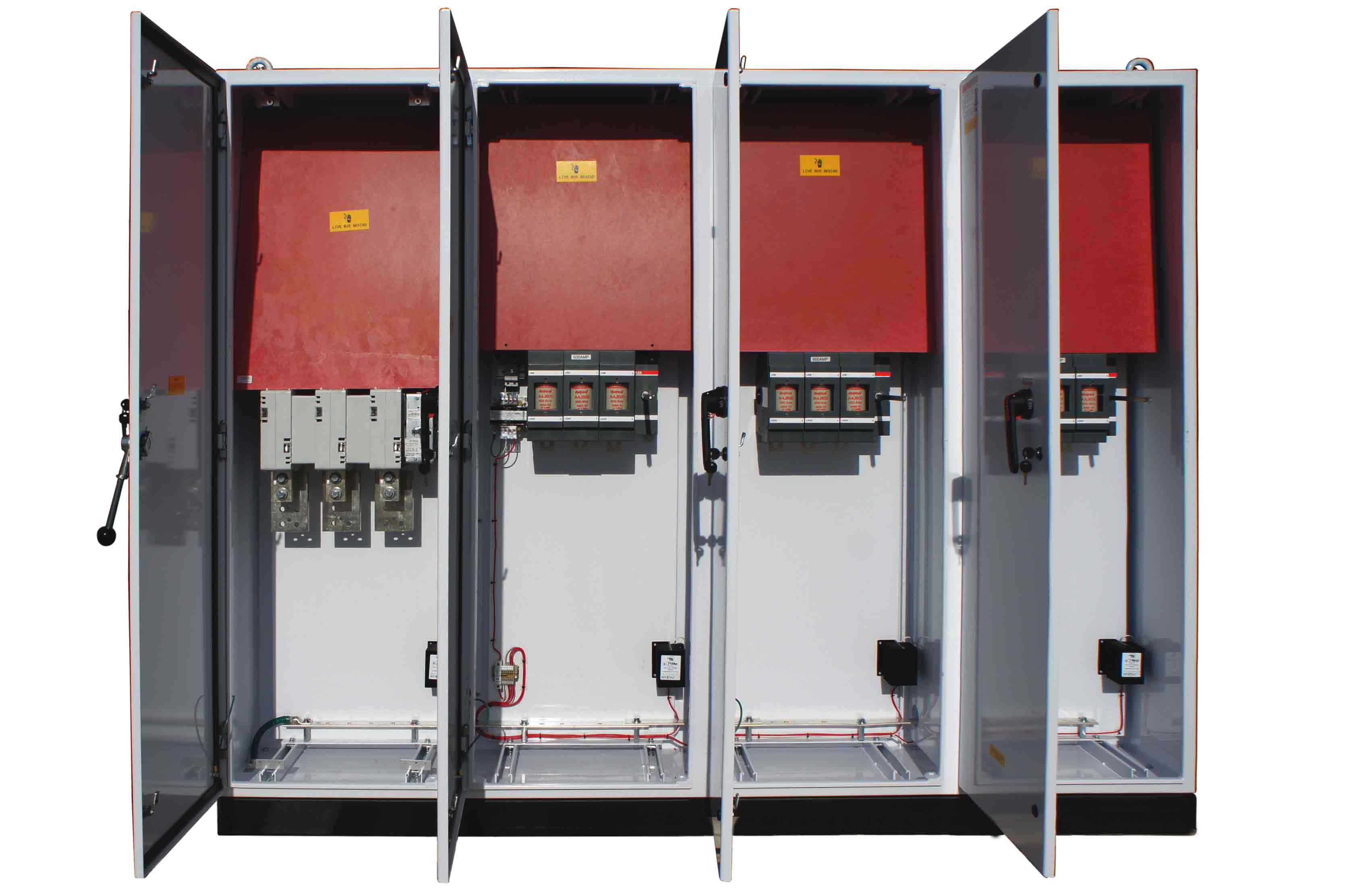
Power Panels
Importance of Power Panels
Power panels are the best answer for safe handling of power in applications such as power reception, distribution, with minimal or no use of control power.
The power panel is made up of an enclosure which is properly designed for the size, air circulation, thermal management, lighting, mounting plate, rails, and various options for landing incoming power feed and delivering the distributed power. The enclosure is properly fitted with drain breather, mounting feet kit, inspection windows and heaters if required. It is powder coated to avoid rust and inter component and back plate bonded to enclosure shell for safety.
Components and Design of Power Panels
Inside the panel, there are functional components such as measurement (CTs/ PTs etc.), protection (fuses, MCCBs, OLRs, GFI etc.), Isolation components (manual or automatic disconnects/ breakers), switching components (MCBs, MCCBs, VCBs, ACBs, switchgear, contactors.
The panel designed based on operating voltage/ current, short circuit current, arc flash requirements, and the right type of busbars (Copper or Aluminium).
The guiding principles of design follow applicable national, international, and regional regulatory standards such as CSA/ NEMA/ IEC etc.
Generally, the market available fused disconnects are available up to 1200 Ampere ratings and non-fused disconnects are available up to 2000 Amps. Molded case circuit breakers, air circuit breakers and vacuum circuit breakers offer lot bigger ratings
Enclosure and Electrical Specifications
The enclosure specification would include mechanical, dimensional, environmental, thermal, painting, ingress protection, purging, ventilation, cable entry/ exit needs, mounting, handling, locking and indoor/ outdoor requirements.
The electrical part of the specification would include, incoming power specs such as:
- HV/ LV
- Three or four wire
- Sizing of conductors
- Insulation
- Main circuit breaker
- Short circuit protection
- Individual circuit fusing
- Thermal or magnetic or vacuum circuit breaker
- Isolation
- Single phase or three phase load descriptions
- Voltage and current needs
- Operating needs such as status indication, grounding needs, breaker short circuit ratings, etc.
Following are the applicable national and international standards
- Underwriter Laboratories – UL 845 / Publications s 50 and 508
• National Electrical Manufacturers Association (NEMA) – ICS-18-2001/ Standard 250
• National Fire Protection Association (NFPA) – National Electric Code – Article 240/ Article 430.94
• International Electrotechnical Commission (IEC)
a) IEC 61439-1: 2011, Low-voltage switchgear and control gear assemblies – Part 1: General rules
b) IEC 61439-2: 2011, Low-voltage switchgear and control gear assemblies – Part 2: Power Switchgear and control gear assemblies
c) IEC 60204-1:1997, Safety of machinery – Electrical equipment of machines – Part 1: General requirements
d) Arc fault tests per IEC/TR 61641:2008 Criteria 1-7
- CSA C22.2 No. 254
